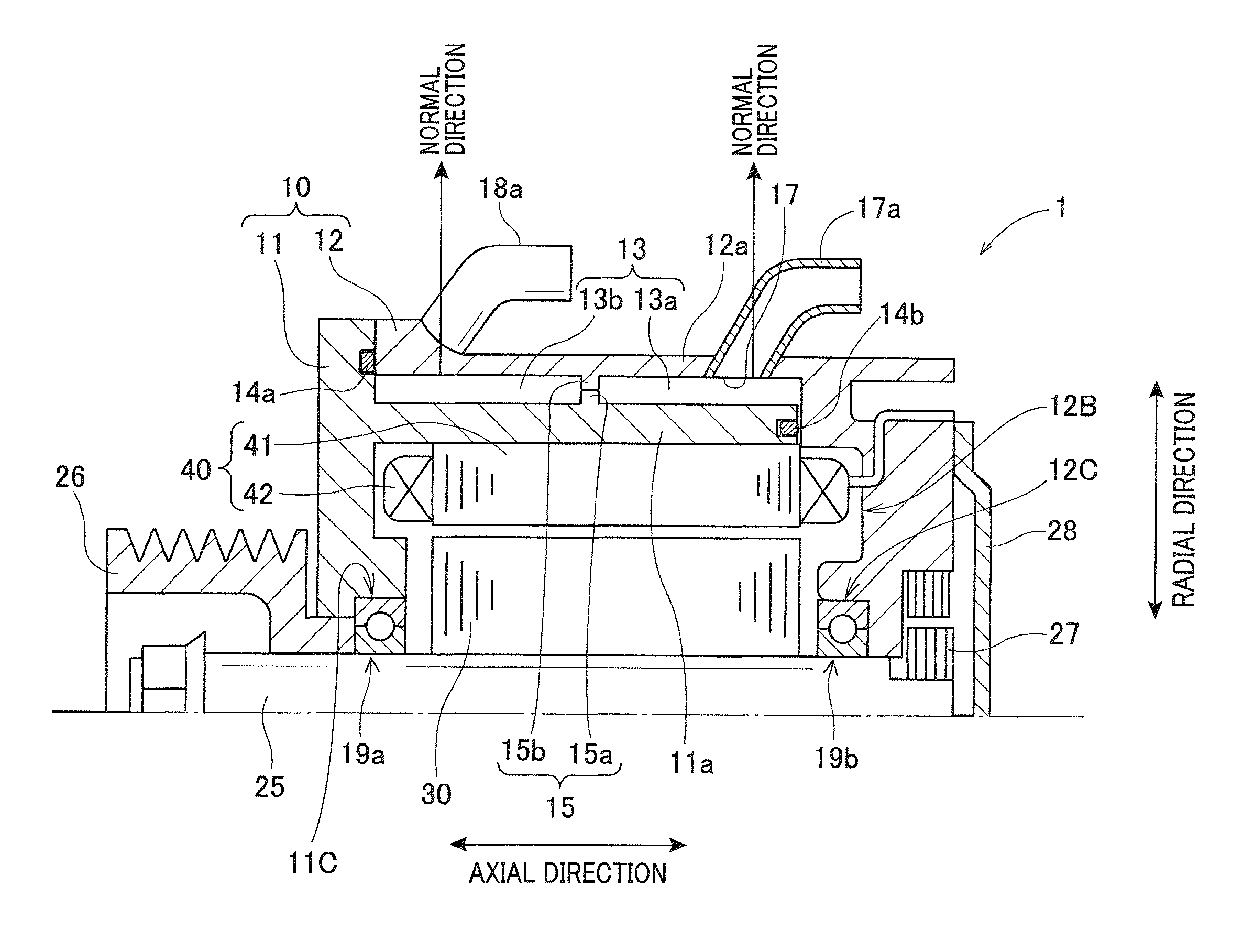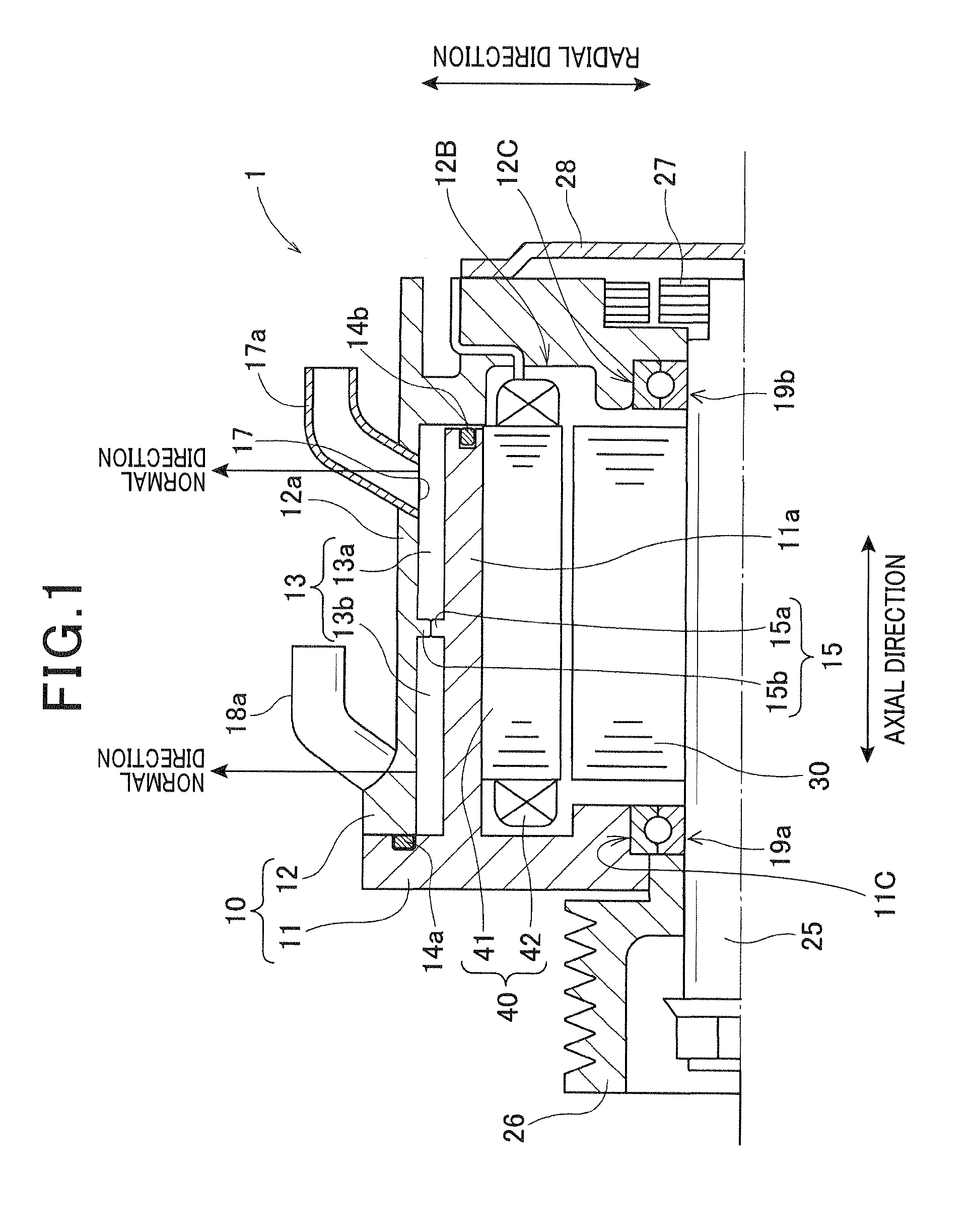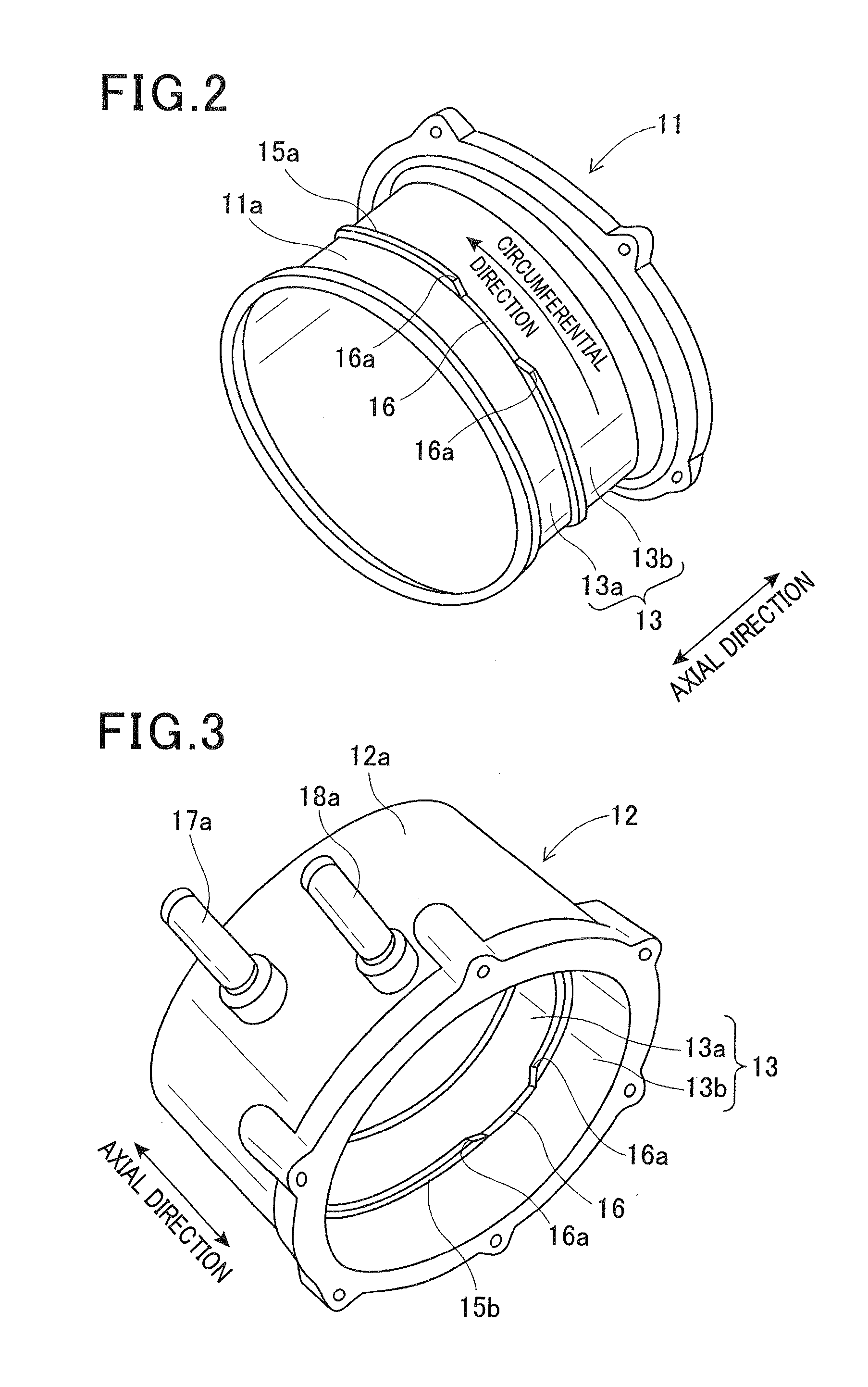Electric rotary machine
a technology rotary machines, which is applied in the direction of dynamo-electric machines, electrical equipment, supports/enclosements/casings, etc., can solve the problems of increasing manufacturing costs, insufficient, and insufficient, and achieves uniform temperature distribution, uniform flow speed, and avoidance of the output torque of electric rotary machines
- Summary
- Abstract
- Description
- Claims
- Application Information
AI Technical Summary
Benefits of technology
Problems solved by technology
Method used
Image
Examples
first exemplary embodiment
[0031]A description will now be given of an electric rotary machine 1 according to a first exemplary embodiment of the present invention with reference to FIG. 1 to FIG. 8A, FIG. 8B and FIG. 8C.
[0032]FIG. 1 is a view showing a partial cross section of an upper half of the electric rotary machine 1 in an axial direction according to the first exemplary embodiment of the present invention. FIG. 2 is a perspective view of a first motor frame 11 in the motor frame 10 of the electric rotary machine 1 according to the first exemplary embodiment shown in FIG. 1. FIG. 3 is a perspective view of a second motor frame 12 in the motor frame 10 of the electric rotary machine 1 according to the first exemplary embodiment shown in FIG. 1. FIG. 4 is a view showing a relationship between a partition wall section 15 composed of an inner partition wall section 15a and an outer partition wall section 15b, an opening section 16, an inlet section 17 connected to an inlet pipe 17a and an outlet section 18...
first modification
[0076]A description will now be given of a first modification of the partition wall section formed in the motor frame of the electric rotary machine with reference to FIG. 5.
[0077]FIG. 5 is a view showing a cross section of a motor frame 10-1 composed of a first motor frame 11-1 having a partition wall section 55 and a second motor frame 12-1 without a partition wall section in the electric rotary machine 1 according to a first modification of the first exemplary embodiment of the present invention.
[0078]As shown in FIG. 5, in the structure of the electric rotary machine 1 according to the first modification, the partition wall section 55 is formed on the first motor frame 11-1 only. That is, the second motor frame 12-1 has no partition section. Like the partition wall section 15 disclosed in the first exemplary embodiment previously described, the presence of the partition wall section 55 can provide cooling fluid having a uniform distribution of flow speed. That is, the structure ...
second modification
[0080]A description will now be given of a second modification of the partition wall section formed in the motor frame of the electric rotary machine 1 with reference to FIG. 6.
[0081]FIG. 6 is a view showing a cross section of a motor frame 10-2 composed of a first motor frame 11-2 and a second motor frame 12-2 having a partition wall section 65 in the electric rotary machine 1 according to a second modification of the first exemplary embodiment of the present invention.
[0082]As shown in FIG. 6, in the structure of the electric rotary machine 1 according to the second modification, the partition wall section 65 is formed on the second motor frame 12-2 only, not formed on the first motor frame 11-2. Like the partition wall section 15 disclosed in the first exemplary embodiment previously described, the presence of the partition wall section 65 can provide cooling fluid having a uniform distribution of flow speed. That is, the structure of the motor frame 10-2 makes it possible to uni...
PUM
 Login to View More
Login to View More Abstract
Description
Claims
Application Information
 Login to View More
Login to View More - R&D
- Intellectual Property
- Life Sciences
- Materials
- Tech Scout
- Unparalleled Data Quality
- Higher Quality Content
- 60% Fewer Hallucinations
Browse by: Latest US Patents, China's latest patents, Technical Efficacy Thesaurus, Application Domain, Technology Topic, Popular Technical Reports.
© 2025 PatSnap. All rights reserved.Legal|Privacy policy|Modern Slavery Act Transparency Statement|Sitemap|About US| Contact US: help@patsnap.com



